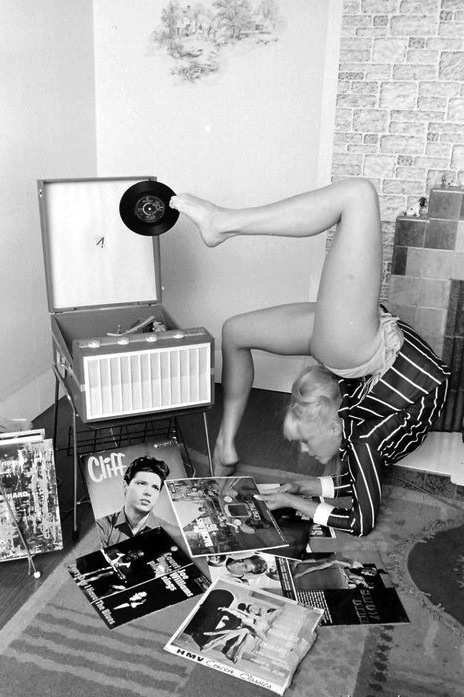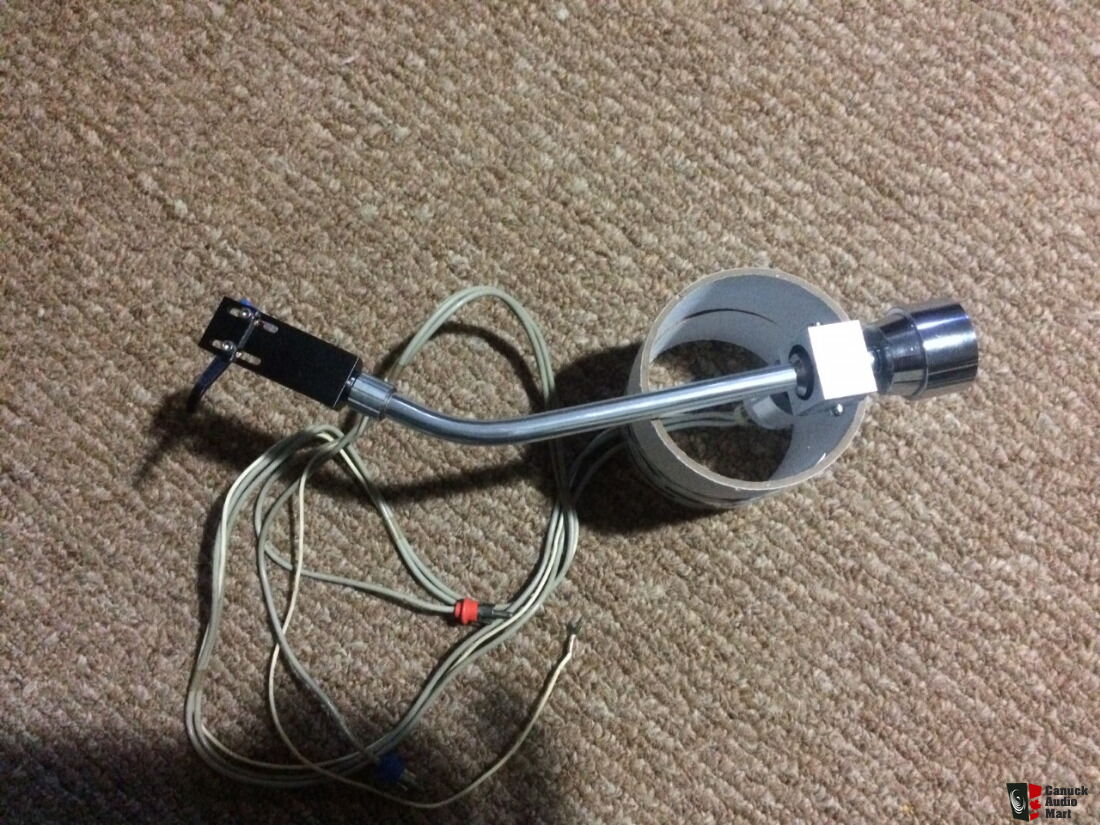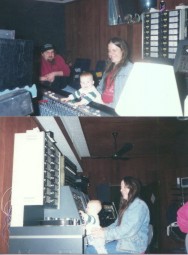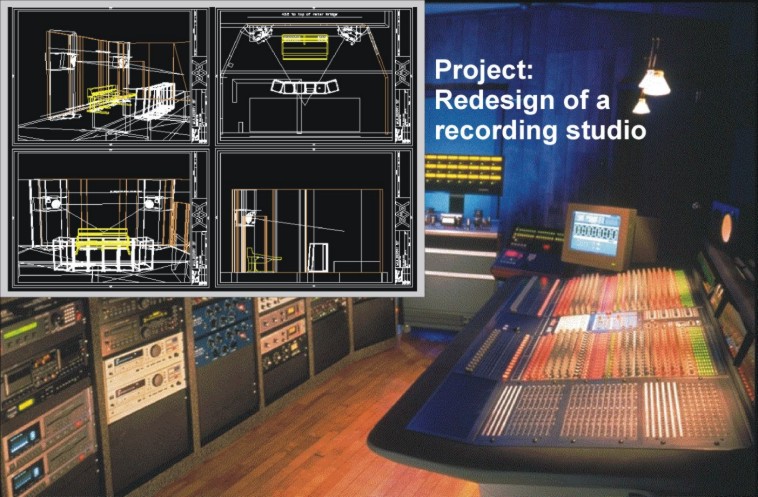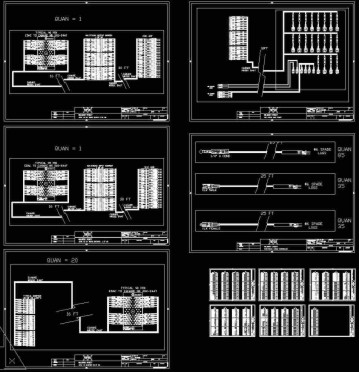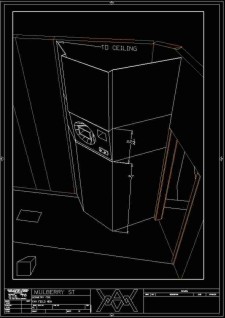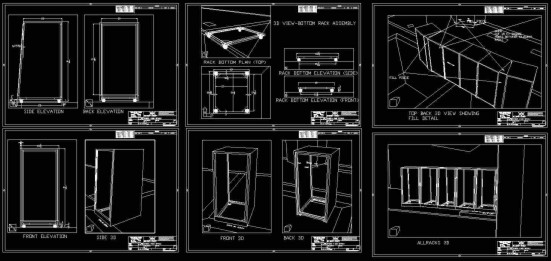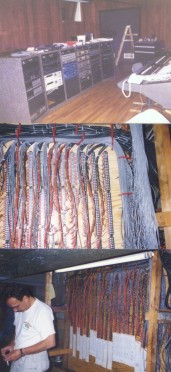As to vinyl - well I spent a good part of a decade at Opus One in Pittsburgh. Worked on things like Transcription units that cost thousands. This was in the late 70's early 80's right when CD's first came out.
We were so thrilled - even at a high end golden ears shop like Opus - when that happened. All the crap with antiskate, tangential tracking erro, mismatched RIAA preamps, etc...
There's a band that a lot of the analog guys love - Steely Dan. The engineer - the late Roger Nichols - hated vinyl to a degree:
https://www.audiocircle.com/index.php?topic=5605.0
"Snap, Crackle, and Pop Music
By Roger Nichols
I originally got involved in recording music because I hated clicks and pops on records. I figured that the only way that I was going to get good quality recordings to play was to record them myself. I could then bring home two-track 15 ips copies to play on my stereo. Much better than the Rice Crispy sound of vinyl LPs.
When the Compact Disc became a reality, I was beside myself. I was also close by the side of any record company exec who could get me any discs to play on my new found CD player. Since CDs preserved all the characteristics of the original master tape, I could now enjoy music without the drawbacks of black vinyl.
VINYL VERDICT?
The first project I worked on that became a Compact Disc was Donald Fagen's Nighrfly album. I couldn't wait to get the CD in my hot little hands and compare it with the original mixes. When the CD arrived, I ran to my audio system and threw the CD into my player. After about 30 seconds I was ready to throw in the towel. The CD didn't sound anything like the final mixes. Was I wrong about digital audio? Was the Compact Disc truly inferior to the vinyl disc that it was to replace?
I started doing some checking with the mastering facility where we mastered the album. Bob Ludwig at Masterdisk in New York told me that the record company never asked for the 1610 digital master that we'd made. Instead, they had requested a 30 ips half-inch analog tape copy of our digital mixes. They then made the CD master from this analog copy. No wonder my CD didn't sound like the original mixes. After we raised enough hell, new CD masters were prepared and new CDs were pressed. I compared the new one to the original mixes. It matched perfectly. Whew!
This was in late 1982. I figured that there was a necessary learning curve for the record companies to get their act together and realize that digital audio Compact Discs should not be made from second or third generation analog tape copies. Isn't nine years enough time?
AJA-TA
In 1982, Donald Fagen, Gary Katz and myself gathered up all of the original Steely Dan tapes (15 ips analog) and transferred them to digital format so that they would not deteriorate any further. This was in anticipation of catalog re-release in the new Compact Disc format. The first two albums to be released on CD were Aja and Gaucho. I listened to the CDs and they were fine.
Mobile Fidelity is licensed to produce gold plated CDs of Aja and Gaucho. They called me up to ask me if I liked the sound of their pressings. I listened to them and compared them to the CDs from MCA. I figured that the only difference I would hear would be the difference between the gold plating and the aluminum plating on the stock CD. I was shocked! They sounded completely different. The gold ones sounded worse. The gold Gaucho CD was even a different speed, about a quarter tone sharper than the original CD from MCA.
A writer I know called me to ask if I heard any difference between the stock CDs and the gold CDs. I told him what I found. He said that he didn't hear any difference. The lightbulb went on in my thought balloon! The stock CDs that I had were produced seven years ago, and the ones that my friend used were just purchased at Tower Records. I jumped in my car and zipped over to the nearest record store and purchased new copies of the CDs in question. He was right, the new stock CDs sounded exactly like the gold CDs, including the pitch shift on the Gaucho CD.
The time we spent transferring all of the original masters was wasted. The record company in their infinite wisdom decided that when they needed new 1630 CD masters to send to the CD plant, that it would be better to use the EQ'd analog copy that had been sitting around for fifteen years instead of the digital tapes that we supplied to them nine years ago for just this purpose. And on top of everything else, they couldn't even make sure that the analog machine that played back the Gaucho tape was going the right speed.
I guess this is all just a part of a grander scheme - make all of the CDs sound worse and worse until we can't tell the difference between Compact Discs and the new Digital Compact Cassette that the record companies are pushing. I went to my storage locker and found all of my old vinyl LPs. I haven't thrown my turntable away yet either. Maybe the clicks and pops aren't quite so bad after all.
"
So I have to state that a lot of what I hear on vinyl, I just can't believe. Having had to fix that crap back then...
Again - please don't be offended - just my opinion.
My thoughts on Vinyl:
http://www.ajawamnet.com/ajawamnet/Vinyl_Sucks_and_Your_Little_Dog_Too.html
In response to a recent rant from Lefsetz about how great vinyl is:
Rate of change phenomena directly and physically translated from mechanical/electro-mechancial media is limited to asperities in the media which will change and vary as per Archard equation:
http://en.wikipedia.org/wiki/Archard_equation
I too loved the romance of the ol' 24 tracks - here's a pic of my kid (a year old at the time) sitting in front of a 2" 16/24track A-80 Studer, yep, just like the ones that recorded all that "good ol' vinyl" you guys seem to love so much:
http://www.ajawamnet.com/ajawamnet/page3/page3.htm
Man, I loved the smell of the tape, big ass 2" reels, 3M 250, Ampex 406/456. Big ass servo's moving an 8 pound reel...
BUTTTT - Do any of you know how fucked up that shit was? Really? I recall a story of how a well known producer took a tape into Mastersound and then realized the 10K alignment tone was wavering 'cause he left his master next to his bookshelf speakers....
Ain't just me - see Jack Endino's page titled
"The Unpredictable Joys of Analog Recording" http://endino.com/graphs/index.html (Jack's the guy that did a lot of the early Seattle stuff including Nirvana's Bleach ).
From that page: "To me, analog is unpredictable; it does that funny thing to the bottom end. You work really hard on the bottom to get it exactly right, and then you play it back on your analog tape, and it's like, 'Oh, what happened there?' The storage medium is making decisions about what the bottom end should sound like." ~
Bob Clearmountain
I also repaired all those, "good ol" tape decks. Isoloop 3M 56/79's, JH-24 MCI's that had so many issues with the discrete CMOS transport logic (JH110 transports), Did tons of work on Ampex MM-1100/1200's with their funky head loading issues, Otari's (MX80's to non-capstan MTR90's) and everything in between. Setting bias on a Scully 1" was a nightmare if it was older than a year or so - electrolytic caps go to la-la land. You'd never get all the channels to sound the same.
And every Studer known to man... in fact, to set up new brakes on an A-80, one had to flood the hubs with Acetone, then run the units WITH THE BRAKES ON (you pulled the brake solenoid) until it started to smoke slightly - then and only then were the new brake bands broken in... otherwise you'd spill $200/reel 2" tape on the floor next the bass player's cumshot from him fucking some groupie the night before (actually had to fix an Amek 2500 console that happened to before a session with Blue's Travelers at Mulberry Street Recorders).
Do you guys even have a clue as to how fucked up even the best of the best was back then with regards to signal integrity? How many of you actually know how to set the volts per division and triggering on an oscilloscope? Especially an old 500 series Tek that was as big as a stove?
Geeez....
As to the "wow - vinyl" here's a bit of info - it actually sucks... ya know why? You can't track a stereo groove exactly the way a cutter, such as the ol' Neumann lathe/Telefunken cutter actually cut the grooves - and even those weren't the best - here's an actual datasheet with specs:
Specs of a typical Professional Diskcutter Head
What? only rated to 15KHz? Probably one of the reasons for half-speed mastering...
OK - I'll answer one of the questions from the end of this rant - You CANNOT play a record again within 17 hours after a stylus passes over it. Why? The extreme forces of that little elliptical or conical diamond stylus, due to the small surface area of contact, exerts extreme pressures (even at one gram tracking force) and destroys the high frequency info in the grooves - the plasticizers in the vinyl (pure vinyl is brittle) compress to a point that an immediate replay of the record just lops off the hi freq grooves...see the first paragraph of this rant...
Dust on the record? Naw man, that's all the cymbals going bye-bye...that grey dust is actually part of the groove....
I will say that other studies (esp those done by the Last Co.) show more damage is caused by conchoidal fractures than replay. But other studies have shown that as the point of contact goes "plastic" further stress can exacerbate fracturing.
OK... as a kid I worked at Opus One in Pittsburgh - Tasso (the owner) actually built George Benson's first guitar amp (actually one of his techs did out of an old KLH amp)
I remember getting a hi-end audio system on the service lift that claimed it picked up Radio Moscow on the left channel... I went upstairs to the sales guy with a "What the fuck..." question. Didn't even get that far, Phil, the sales guy, said the customer ran the electron microscope at CMU and had a Ph.D. EE.
So I go to the guy's house, he's using a top of the line Thorens, with a Linn tone arm and Supex MC cartridge - turns out the ground system for his DX long wire antenna was inducing RF into the phono preamp.
To get a phonograph to play even close to what happened on the master tape or even the mastering lathe, required such care that it was insane....
OK, I sent this before and I really hope you ACTUALLY post it this time:
Seriously, anyone here that's really into vinyl know how to set antiskate? How do you really do it correctly? It's effects on channel balance?
OK... I just did a Google to see forum results for Rega, antiskate (with all the spelling variations).
Wow - only a few of them that I saw (I realize I didn't do an exhaustive search) failed to talk about the true way to set antiskate.
You see, on any pivotal tonearm, there is a tendencey for the tonearm to be pulled towards the center of the turntable. Back in the day the typical consumer turntable had a dial with a spring to counter this force. The dial had a scale that typical consumers would use to set anti-skate depending on the tracking force; there were all kindsa rec's on how to set it - not any of them were correct.
In fact, the way you really set antiskate, it to get a special test disk - No, not the fancy pants one I saw on all these forums.
A blank (no groove) disc. Blank. Totally. Just a flat fucking vinyl polymer disc. Just like a record but no groove.
Now put that on your Rega- bop thingy. Place the tone arm on the 33-1/3 or 45 RPM spinning blank disk with what you THOUGHT was the correct antiskate.
Watch what happens - you may want to be awake, really awake for this.
As the tonearm starts skating inward or outward (depending upon how fucked the antiskate you thought was right ACTUALLY is), you may want to be ready to keep it from destroying your pinky-pinky stylus as it either slams into the label area or whizzes past and falls off of the needle drop area.
Yep - back in the day, that's how we set it... back in 1975 - back when that, 8 tracks, cassettes were king. Lovely...
Here's a vid -
How long does the average stylus suspension really last? What are plasticizers and how does it effect a phono cartridge?
Speaking of plasticizers, how does the variance in these chemical compounds affect hi frequencies and groove life?
How many people here know how long it takes the typical vinyl formulation to recover after a stylus passes over it?
How's 'bout MC vs MM and inertial differences?
OK... how's bout phase shift due to poor RIAA preamps? Anyone here know the diff? Anyone here know why there even is an RIAA curve? How's 'bout when the electrolytic coupling caps dry out? What happens then? How is the average shelf life of an electro rated?
How does L/R phase effect cutter/Stylus motion? How is stereo cut into a groove? What is the effect on channel separation?
Anyone here actually used a Fairchild limiter on a Neuman/Tele lathe/cutter?
What is the effect of the diminishing circumference as the groove approaches the center of the disk?
OK... How's about linear tracking vs tangential error? How's a record cut - Pivotal or radial? What effects does it have as the stylus moves towards the center of the record?
OK... Anyone here tell me what famous turntable used to use gymbal suspension and could actually play upsidedown?
OK.... anyone here actually uses a Lissajous display to actually observe LF modulation characteristics of the various drive technologies (belt vs puck vs direct drive)?
Some great stuff on vinyl here -
http://www.micrographia.com/projec/projapps/viny/viny0000.htm
... love the silverfish turds

